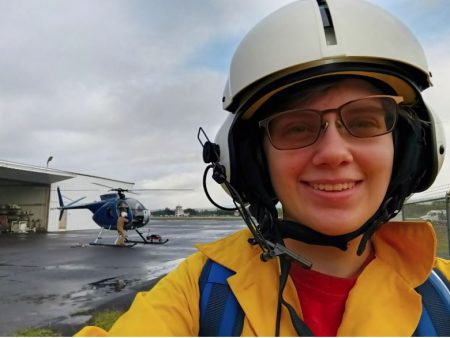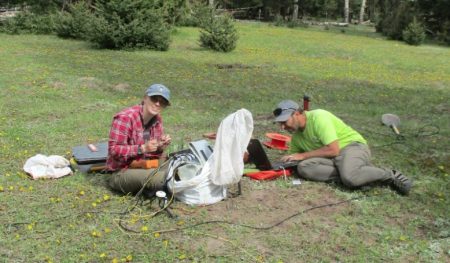This summer, Elliz McClelland interned in the URISE (Undergraduate Research Internships in Seismology) program, funded by EarthScope (formerly known as IRIS). This internship experience gave them professional research experience, guidance about graduate schools, and the opportunity to work with an institution they’d like to work at during their career. As part of their internship experience, they will also present at the annual national American Geophysical Union (AGU) meeting in December 2023, a completely new experience for them.
During Elliz’s internship, they conducted research into a volcanic caldera using geophysics in New Mexico. Elliz worked under the mentorship of the United States Geological Survey and spent part of their summer working in the USGS office in Denver, Colorado. This internship was a multi-faceted experience where they had the opportunity to do a lot of traveling. Elliz spent their first couple of weeks performing fieldwork in New Mexico in their study area, then moved into Denver to work at the USGS office. They were also lucky enough to work on a separate USGS project where they traveled to Hawaii to help their mentor conduct field research. Their summer was full of new experiences and cultures!
The URISE internship was highly targeted toward providing research experience and preparation for graduate school. While Elliz intends on taking a least one gap year before attending graduate school, the information the internship coordinators provided them about graduate school was instrumental in making their decisions about furthering their education.
When reflecting on the value of the URISE internship, Elliz says, “For my needs, this internship was also immensely useful in determining my career path. I ‘put my boots on the ground’, so to speak, working directly with the USGS under a position I might like to hold myself in the future. My summer experience really confirmed for me that I love doing field work and I would enjoy working for an institution like the USGS.”
In December, Elliz presented their work at the AGU national conference in San Francisco, California. This conference is one of the biggest Earth Science conferences in the nation and is an excellent opportunity for students to meet potential employers, experience the professional research conference environment, and network with fellow geoscientists. For more details about Elliz’s internship experience and the research they conducted, you can visit their summer blog at URISE. Elliz would also like to highly recommend this internship to any geoscience students with an interest in research and geophysics. Anybody can apply and prior geophysics experience is not required! You can stay updated about internship applications at URISE.


